Logistical Fratricide: The Cost of Fast Jet TACAIR, Measured in Purple Hearts
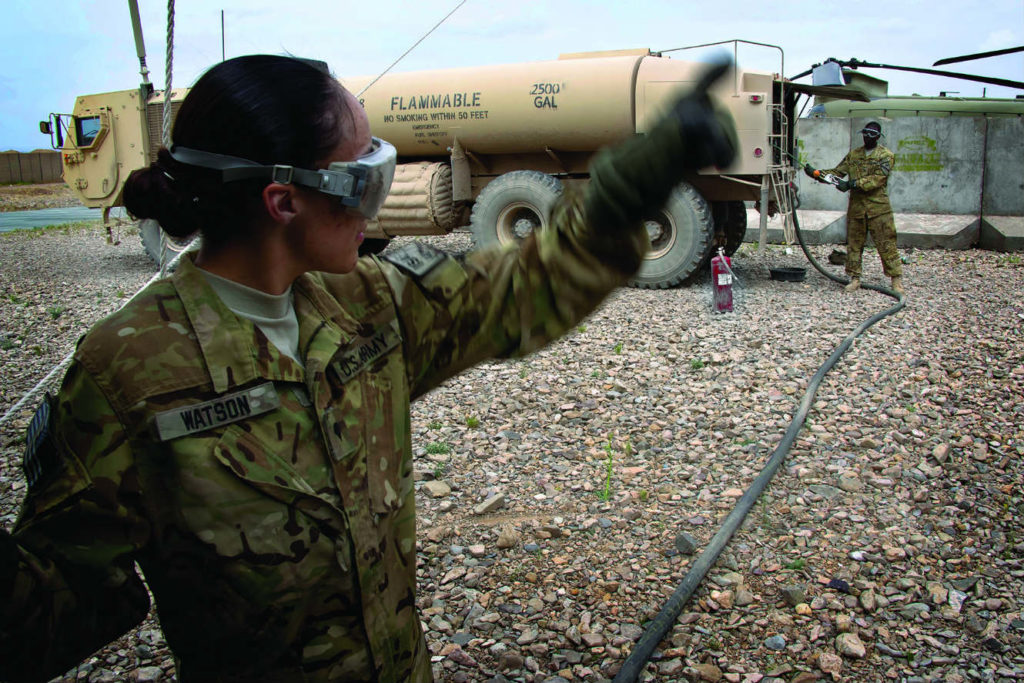
“Amateurs talk about tactics, but professionals study logistics.”
The U.S. Air Force has been continuously at war for more than 25 years. From the opening minutes of Desert Storm to the present, there has not been a time when the Air Force was not flying combat missions in support of national security objectives, often simultaneously in widely separated locations. The vast majority of that burden has been borne by the fighter/attack force, which has been continuously employed for over two decades without a break. The effectiveness of that force and its versatility remain undisputed. Yet these operations have not been without their challenges, particularly of the logistical sort. Combat operations in the 1990s were easy to support logistically, flown from NATO, Saudi, and Kuwaiti airbases under permissive conditions. But from the early days of Enduring Freedom when A-10s moved into Afghanistan, the logistical burden of supporting our legacy fighters jumped precipitously because the supply routes into Iraq and Afghanistan were never free from hostile threat. The high fuel consumption of legacy fighters necessitated a very intensive logistical effort conducted at significant cost in blood and treasure.
Today in Syria and northern Iraq, the Air Force avoids this problem by flying from distant bases, a concept of operations that adds excessive flying hours to its aging jets at exorbitant cost. If there was no alternative to fast jets, this would largely be an unavoidable burden. But modern turboprop-powered light attack aircraft offer a capable, viable alternative for providing air support in irregular conflicts. Light attack aircraft, operating in place of some legacy fighter/attack aircraft in current or future irregular conflicts, offer an opportunity to greatly reduce the fuel burden imposed by air operations, offset the high cost of employing airpower, and expand our definition of “global reach.” Had the Air Force done this a decade ago, we might also have reduced the number of Purple Hearts awarded to servicemen and their families.
Consumption
Aircraft, particularly jet aircraft, use a lot of fuel. The Air Force is the largest user of fuel in the Department of Defense, using more fuel (mostly jet fuel) than all other government users combined. In 2015, the Department consumed 3.06 billion gallons of jet fuel at a value of over $10.6 billion, the majority of which was purchased overseas. This massive appetite for jet fuel is more than quadruple the U.S. military’s consumption of diesel fuel and roughly 25 times its consumption of gasoline. While the military’s overall use fuel has been falling since the peak surge years, this may be attributed to the reduced operational tempo across the joint force, rather than to any major gains in efficiency.
Combat operations drive high fuel consumption. In 2006, as Central Command argued for a surge in Iraq, the majority of the U.S. military’s fuel use (58 percent) was jet fuel, dwarfing the next largest category (marine diesel) at 13 percent. In 2008, total fuel deliveries to Iraq and Afghanistan exceeded 90 million gallons per month — 20 percent of the entire Defense Department consumption. Because of the poor in-ground petroleum transport infrastructure in Iraq and especially in Afghanistan, the heavy use of fuel in Operations Iraqi Freedom and Enduring Freedom can be directly tied to casualties incurred by ground operations required to get the fuel to U.S. bases, particularly airbases. Overall, roughly half of the total tonnage hauled overland was fuel, with the Army bearing the lion’s share of the ground transportation burden for all of the services. Air Force airpower supported the Army’s wider campaign, but the Army itself moved and protected the fuel needed to make that happen.
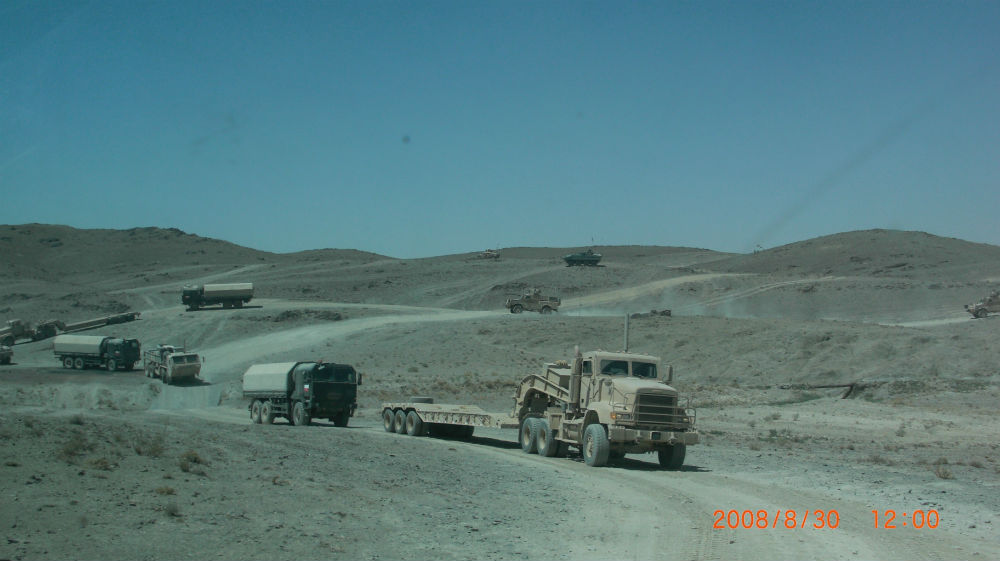
In Iraq and Afghanistan, the tie between fuel demand and casualties was significant and quantifiable. With fuel and water representing the majority of the tonnage hauled, the Army developed a model in 2009 using historical casualty data. The model included only fuel purchased by the Army, but the estimates apply regardless of who received the fuel. In Afghanistan, one U.S. serviceman or contract civilian was killed or wounded for every 24 sixteen-truck fuel convoys, and that number was one per every 38.5 convoys in Iraq. Over a year, that number adds up. There were 38 casualties incurred moving 897 “average” fuel convoys in Afghanistan in FY2007. The data includes both wounded in action and killed in action for both Army personnel (including Guard and Reserve) and contractors (and other civilians), but does not include casualties among allied forces or the Marine Corps. Marines track their data differently, but the Marine Corps’ Expeditionary Energy Strategy (2011) did highlight the issue:
During a three-month period early in 2010, six Marines were wounded hauling fuel and water to bases in Afghanistan during just 299 convoys. That is one Marine wounded for every 50 convoys.
The same document also quotes the British Ministry of Defence in assessing that between 2001 and 2010 a whopping 39 percent of the total killed in action of U.K. uniformed personnel and contractors (over 190) was related to resupply efforts.
My own experience with combat logistics movements suggest that the casualty data relied on for the model may be underreported. Soldiers who were subject to non-penetrating blast injuries (such as concussions) were not then eligible for Purple Hearts and were therefore undercounted. While I was embedded with combat engineers in Afghanistan, several soldiers informed me that they did not even report minor combat injuries for fear of being assigned to tasks that kept them inside the wire. I witnessed this myself on a 10-day, 300-kilometer combat logistics patrol to supply Forward Operating Base Waza Kwah in Paktika province. We found seven improvised explosive devices (three the hard way), and we were ambushed twice and mortared once. Total losses were one jingle truck and one Polish Rosamak Infantry Fighting Vehicle destroyed and two MRAPs damaged (one twice). Two Purple Hearts were legitimately earned but probably not claimed. As we pulled up to the disabled vehicle in our own MRAP (Mine Resistant, Ambush Protected) vehicle with the platoon medic, the Polish officer dismissed our offer of medical assistance: “F___ medic. We don’ need medic. We are in Rosamak.” Had the Polish infantry been U.S. forces, they would have accounted for another eight Purple Hearts. The Polish Wojskowa odznaka Za Rany i Kontuzje Wound Decoration is only awarded for injuries requiring surgical treatment.
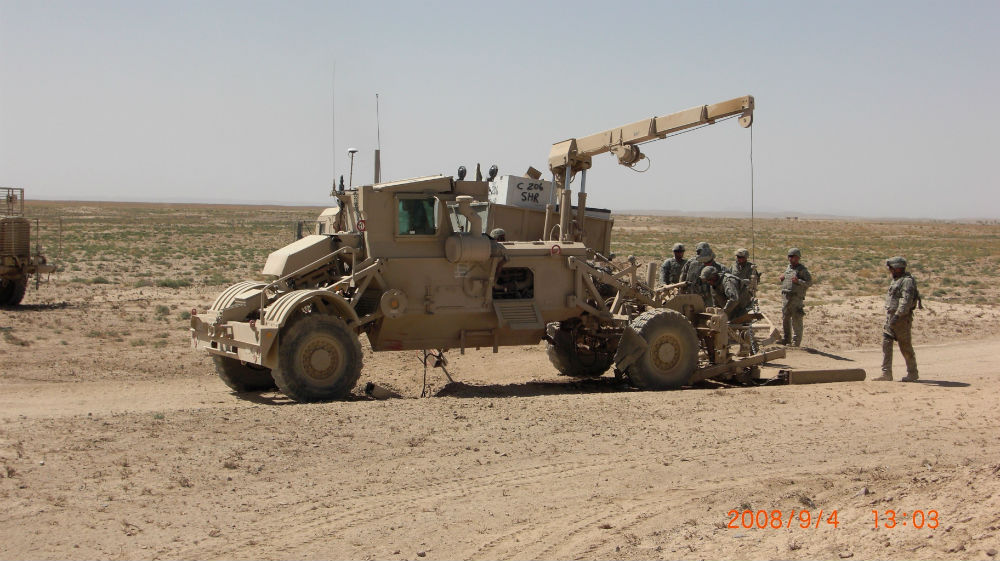
“Gentlemen, the officer who doesn’t know his communications and supply as well as his tactics is totally useless.”
– Gen. George S. Patton, USA
The direct link between fuel and casualties is not news. However, the impact of high fuel consumption by Air Force fighter/attack aircraft remains poorly understood and rarely discussed. If there were no alternative to the current jet fleet, the discussion would be moot. But for the kind of challenges faced in Iraq, Syria, Africa, the Philippines, Afghanistan, and elsewhere, there is a viable alternative: a turboprop-powered light attack aircraft. Air Combat Command has a designation for its proposed light attack aircraft: the OA-X. Among its other capabilities, the fuel consumption of OA-X is known to be a fraction of the consumption of fast jets.
OA-X is not a PowerPoint airplane. Two examples exist today: the Beechcraft AT-6C Wolverine and the Embraer EMB.314 Super Tucano (also called the A-29). Internally, these aircraft look like advanced fourth-generation fighters and field similar air-to-ground capabilities, using identical weapons with similar weapons delivery options. What they lack in top speed, they gain in mission endurance. These aircraft have essentially the same air-to-ground capability as legacy jets with similar or better sensors and communications. The issue with the fast jets is not their capability, but the penalties (including cost) associated with bringing that capability to the battlefield.
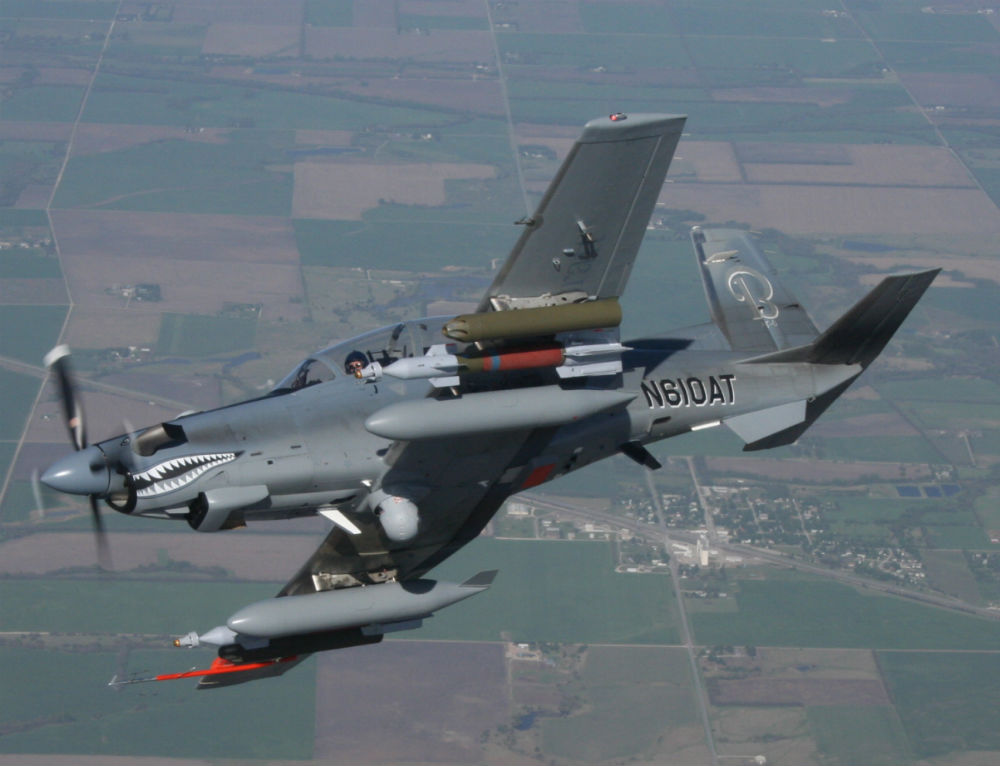
There are a number of other things that distinguish these aircraft from legacy jets. They have no more air-to-air capability than the A-10. They have no realistic capability to operate in an environment dominated by radar-guided surface-to-air missiles. But in environments devoid of these threats — which is most of them — they provide a ground attack and reconnaissance capability similar to the F-16, with the same bombload, more unrefueled endurance, and more basing options. Their fuel-sipping attributes result from their powerplant — a Pratt & Whitney Canada PT6A-68 turboprop that delivers 1600 shaft horsepower granting to both aircraft a power-to-weight ratio better than the legendary P-47 Thunderbolt.
OA-X can be operated from austere airstrips, providing true tanker independence and the ability to operate effectively with substantially less fuel support than legacy fighters. The PT6A engine is extremely resistant to foreign object damage, always possible on unimproved strips. The fuel burned in an hour by a cruising OA-X will be burned by an F-15E in eight minutes of ground taxi. In March 2010, the AT-6B and T-6C flew 24 sorties in 2010’S Joint Force Experiment (JEFX) at Nellis Air Force Base. In total, the two aircraft flew 46 flight hours and burned 15,640 pounds of fuel, averaging 340 pounds per hour. That’s around the amount that it takes to fuel a two-tank F-15E to half capacity. On a per-hour basis, OA-X will use between 3 to 5 percent the fuel of an F-15E and 6 to 10 percent of an F-16C. A single 5,000-gallon fuel truck, sufficient to top off an F-15E for a two-hour sortie, will supply OA-X for over 90 hours of flight.
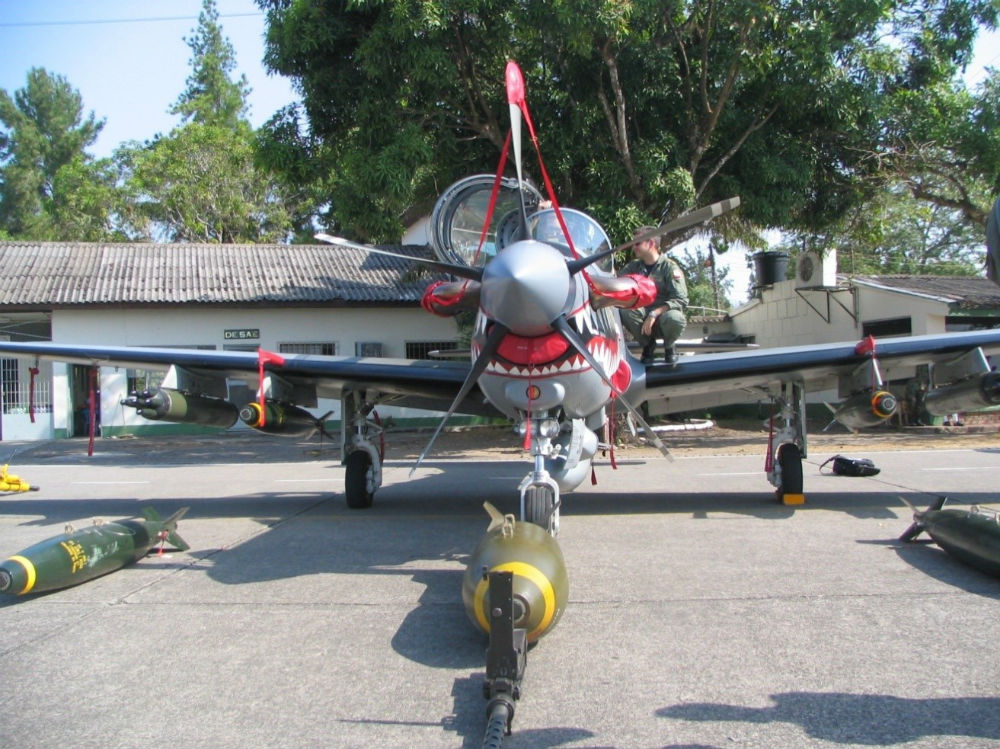
How much of convoyed fuel was dedicated to fighter operations is impossible to precisely pinpoint without the use of data that remains classified, but a reasonable comparison with the F-16 can be made. Assuming that ground-delivered jet fuel accounts for only 25 percent of the fuel used by forward-based F-16s (the rest being delivered via air refueling) compared to 100 percent of the OA-X fuel requirements, OA-X operations reduce the requirement for ground-trucked fuel by 60 to 76 percent of that consumed by the F-16 for the same number of flying hours.
“You will not find it difficult to prove that battles, campaigns, and even wars have been won or lost primarily because of logistics.”
– Gen Dwight D. Eisenhower
Starting in 2004, the Air Force undertook an effort to remove trucks from the roads by increasing the amount of cargo provided by airlift in Iraq and Afghanistan. This effort came at a significant cost in fuel consumed and hours flown by airlift aircraft, but had a measurable effect. For example in 2007, over a period of three months in Iraq, Airmen at Quayyarah West moved 1,100 pallets by air, which obviated the need for 333 truck shipments from Kuwait to bases in Iraq. However, while this air mobility mission kept trucks off the road, fighter missions flown from Balad Air Base offset this effort – and then some.
Had the Air Force fielded a squadron of OA-X in place of some F-16s, the reduced fuel load would have taken many trucks off the road. Over 100 sorties, the OA-X would have drawn 1 million pounds less fuel than the F-16. At a leisurely 40 sorties per day, the OA-X substitution would have accomplished in 32 days what the airlift effort did in 90, all without a single airlift sortie being generated. A year of this adds up: 14,600 sorties, 153.3 million pounds of truck-delivered fuel saved, and 91 sixteen-truck fuel convoys removed from the road.
If historical patterns hold, and there is no reason to suppose that they will not, future irregular warfare challenges will be the type of conflict faced by the Department of Defense the majority of the time. If the Air Force is to reliably present persistent combat airpower in support of ground forces without facing significant logistical challenges and attendant risk, it requires some aircraft that are much more fuel efficient than legacy or 5th-generation jet fighters. Worldwide, the massive fuel and basing requirements of the legacy fleet and its supporting tankers may well preclude air operations in some corners of the world.
This makes OA-X a key global reach capability when we measure reach in terms of forward basing and not in terms of tanker support. The ease of supplying OA-X in the field is an entirely different enterprise from supplying legacy fighters. With a little C-130 support, light attack aircraft can be supplied from the air with far greater ease than thirstier jets. The ability to locally base persistent tactical aircraft completely independent of a tanker effort would be a welcome addition to the Air Force’s capabilities. It is even possible to supply light attack aircraft entirely by airlift. The ubiquitous 18,000-pound fuel bladder can be delivered by C-130 and filled from the C-130’s own tanks, using 30 percent the fuel capacity of a C-130 to grant 40 hours of flying time for light attack. In cases in which local resources must be used and large fuel trucks are few and far between, a light attack aircraft can be topped off from four 55-gallon drums with fuel left over.
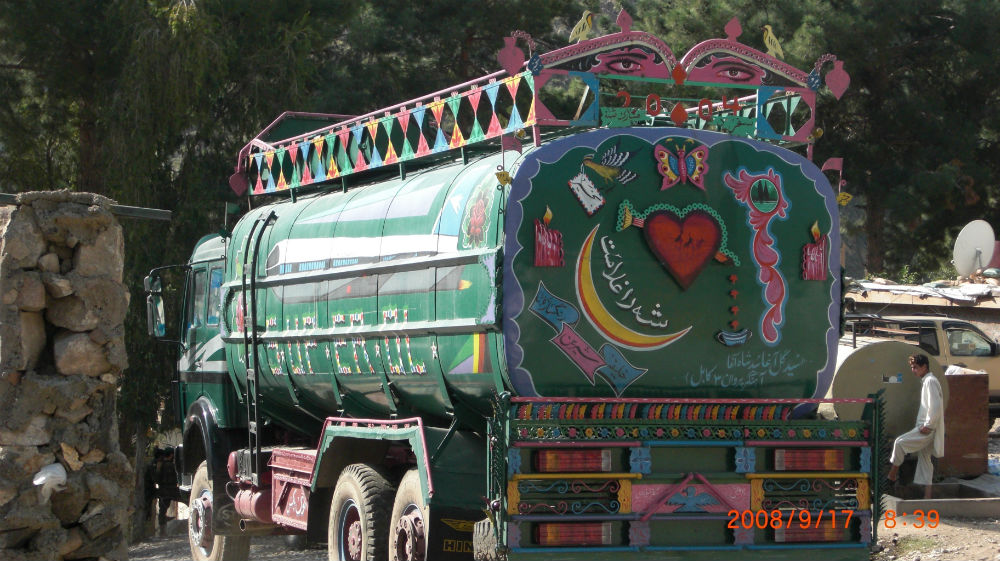
Bitter experience in war has taught the maxim that the art of war is the art of the logistically feasible.
– ADM Hyman Rickover, USN
Wrapup
In many cases, it is true that we have to spend money to save money. The OA-X will not materialize without funding that a sequester-constrainedAir Force does not currently have. This would seem to be an obvious argument to use overseas contingency operations (OCO) money or a supplemental appropriation. OCO money has been spent in large amounts for procurement of MRAPs, which were deployed because they saved lives, not because they were a vastly improved fighting vehicle. With the airpower requirement for enduring combat operations in Afghanistan, Iraq, and Syria, the Air Force is facing a “MRAP moment” wherein the utility of additional combat equipment warrants investment if sufficient funding can be generated from above the current topline. The Air Force is planning on experimenting with light attack aircraft, and it is beginning a process to assess the utility of this category of combat aviation in the conflicts that we have been engaged in for the past quarter-century. If Congress allocates the necessary funds for a sustainable OA-X fleet of around 250 aircraft, the nation will add a valuable capability to its stable of combat aircraft, allowing legacy fighter/attack to be relieved of some of the endless combat demand. For deployed combat operations, the cost for some combat sortie execution would drop like a rock compared to legacy aircraft. A 250-strong fleet could pay for itself in O&M (Operations and Maintenance) and fuel costs alone over a decade, even if the costs of tanker support are not figured in.
It’s too late to introduce light attack aircraft for the surge effort in Iraq — that event is long since past. But it’s not too late to introduce the aircraft for operations in Iraq, or Syria, or Libya, or any one of the widespread irregular conflicts that comprise a global campaign against violent extremist organizations. By folding in logistical considerations to our conception of combat aviation, we have the potential to expand the Air Force’s global reach while simultaneously operating a low-cost aircraft on a logistical shoestring. There is no reason that we have to rely exclusively on a fleet of fuel-thirsty aircraft for our airpower needs when there are viable alternatives present. With relatively few resources and a little forethought, we can provide additional airpower capabilities and limit our future vulnerability to logistical fratricide.
“This is the number that matters: For every 1 percent of fuel we don’t have to burn, 6,444 fewer soldiers have to be involved in convoy operations. And those are sons and daughters and husbands and wives who get to go home to their families someday.”
– Paul Skalny, Director, Army National Automotive Center
Col. Mike “Starbaby” Pietrucha was an instructor electronic warfare officer in the F-4G Wild Weasel and the F-15E Strike Eagle, amassing 156 combat missions and taking part in 2.5 SAM kills over 10 combat deployments. As an irregular warfare operations officer, Colonel Pietrucha has two additional combat deployments in the company of US Army infantry, combat engineer, and military police units in Iraq and Afghanistan. The views expressed are those of the author and do not necessarily reflect the official policy or position of the Department of the Air Force or the U.S. government. This article is an expanded and updated version of a piece published in Armed Forces Journal in 2012.
Image: U.S. Army photo by Sgt. Richard Wrigley

